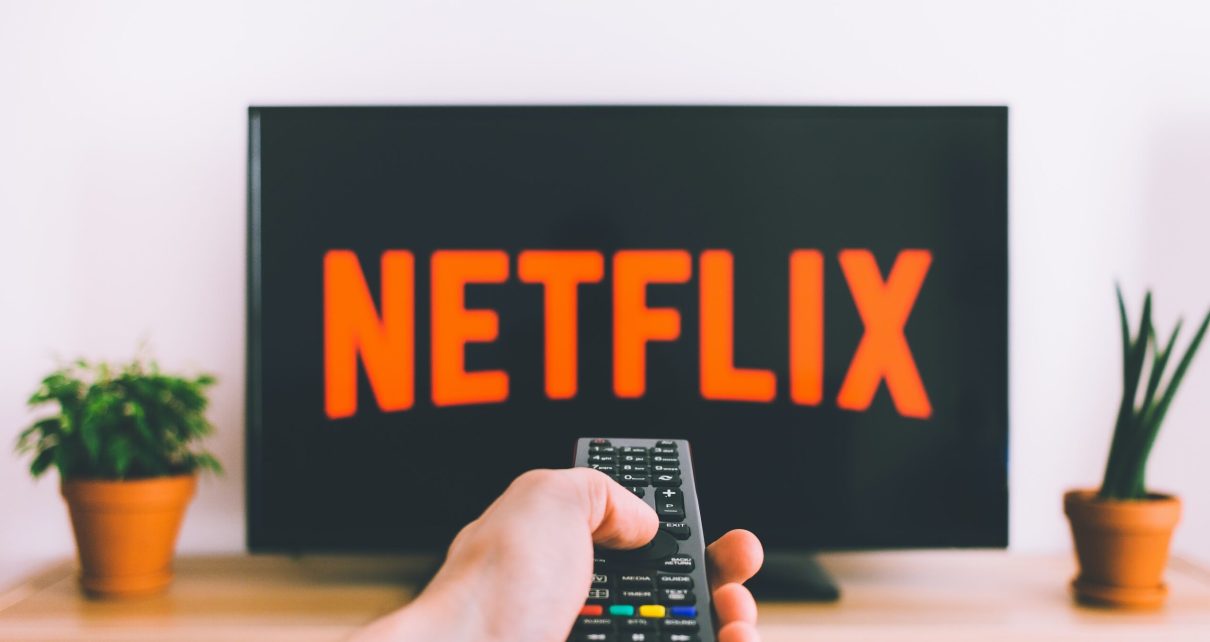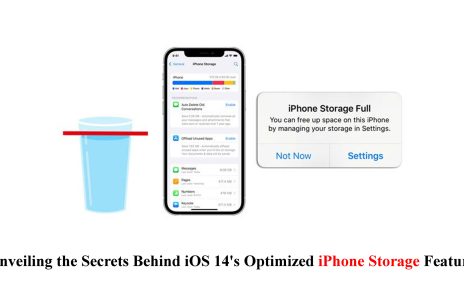Streaming services have taken the world by storm, revolutionizing how we watch television. Gone are the days of being tied to a rigid TV schedule or sifting through countless channels in search of something worth watching. With streaming services, we now have the power to choose what, when, and where we want to protect our favorite shows and movies. This newfound freedom has transformed our viewing habits and profoundly impacted traditional TV networks and cable providers. In this blog post, we will explore how streaming services are reshaping the landscape of television entertainment and what it means for consumers like you! So grab your popcorn, sit back, and get ready to dive into the exciting world of streaming services.
The Rise of Streaming Services
Gone are the days when we had to rely solely on traditional TV networks and cable providers for our entertainment needs. The rise of streaming services has completely transformed the way we consume television content. We can now access a vast library of movies and TV shows with just a few clicks.
One of the main reasons behind the popularity of streaming services is their convenience factor. We no longer have to wait for a specific time slot or deal with commercial breaks interrupting our favorite shows. We can choose what we want to watch when we want to watch it – whether that’s binge-watching an entire series in one sitting or catching up on missed episodes at our own pace.
Moreover, streaming services offer various options catering to different tastes and preferences. From popular mainstream platforms like Netflix and Amazon Prime Video to niche services specializing in specific genres or languages, there is something available for everyone. This diverse selection ensures that viewers can access an extensive content catalog that suits their interests.
Another significant factor contributing to the rise of streaming services is affordability. Compared to traditional cable subscriptions, which often come with expensive monthly fees and long-term contracts, many streaming platforms offer flexible pricing plans that cater to different budgets. This accessibility makes high-quality entertainment more accessible than ever before.
Furthermore, technological advancements have played a crucial role in fueling the growth of streaming services. With faster internet speeds becoming increasingly common and smart devices being integrated into our daily lives, streaming content seamlessly across multiple screens – your smartphone, tablet, smart TV, or gaming console has become more accessible.
In addition to these factors driving their popularity among consumers, streaming services also provide unique features such as personalized recommendations based on viewing habits and user profiles for multiple family members sharing an account – ensuring each member gets tailored suggestions relevant to their interests.
Benefits for Consumers
Streaming services have revolutionized TV viewing, offering numerous benefits for consumers. One of the most significant advantages is the convenience and flexibility they provide. Gone are the days when we had to schedule our lives around TV show air times or rely on recording devices. With streaming services, we can watch our favorite shows and movies at any time that suits us best.
Another benefit is the wide variety of content available on these platforms. There is something for everyone’s taste, from popular TV series to original productions, documentaries, and even live sports events. Streaming services cater to diverse interests and preferences, ensuring that viewers always have a vast selection of options.
Moreover, streaming services often offer personalized recommendations based on user preferences and viewing history. This means that as we continue using these platforms, they learn more about our tastes and can suggest new shows or movies that align with our interests.
Furthermore, many streaming services allow users to create multiple profiles within one account. This feature ensures that each household member has personalized recommendations and can keep track of their progress in different series or movies without interfering with others’ viewing experiences.
Additionally, most streaming services offer ad-free options or significantly fewer commercials than traditional TV channels. This uninterrupted viewing experience allows consumers to fully immerse themselves in their chosen content without constant interruptions from advertisements.
Last but certainly not least important is the cost-effectiveness of streaming services compared to cable subscriptions. Many people find it more affordable to subscribe to a few streaming platforms rather than pay for expensive cable bundles with channels they rarely watch.
The Impact on Traditional TV Networks and Cable Providers
As streaming services continue to gain popularity, the impact on traditional TV networks and cable providers must be addressed. These once-dominant players in the television industry are now facing significant challenges and disruptions.
One of the most significant impacts is the shift in consumer behavior. More and more people opt for streaming services over traditional cable packages because of their convenience and cost-effectiveness. With streaming, viewers can choose what they want to watch and when they want to watch it without being tied down by schedules or expensive subscriptions.
This shift has led to a decline in viewership for traditional TV networks. As audiences flock to streaming platforms like Netflix, Hulu, and Amazon Prime Video, advertisers are also shifting their focus towards these platforms where they can target specific demographics with greater precision.
Moreover, cable providers feel pressure as customers increasingly cut the cord in favor of streaming services. This has forced them to adapt by offering streaming options or partnering with existing platforms. However, many consumers still need to improve compared to dedicated streaming services that provide a more comprehensive range of content choices.
Traditional TV networks and cable providers must also contend with increased competition from new entrants into the market. Streaming giants like Disney+ and Apple TV+ have entered the scene with exclusive content that attracts subscribers away from established players.
Traditional TV networks and cable providers must embrace change to remain relevant in this rapidly evolving landscape dominated by online streaming services. Adaptation is critical for survival as consumers continue gravitating towards convenient access and personalized viewing experiences offered by these innovative platforms.
Challenges Faced by Streaming Services
While streaming services have undoubtedly revolutionized how we consume television content, they have their fair share of challenges. One major obstacle these platforms face is the fierce market competition. With new streaming services constantly emerging and established ones continuously evolving, staying ahead can take time and effort.
Another challenge stems from licensing agreements and content restrictions. Securing rights to popular shows and movies often requires substantial financial investments, leading to increased subscription costs for consumers. Some content creators may also refrain from licensing their work to specific platforms or limiting access based on geographical regions, further complicating matters.
The issue of internet connectivity also poses a challenge for streaming services. While high-speed internet has become more accessible in many parts of the world, there are still areas where reliable connections are scarce or expensive. This can hinder users’ ability to stream content seamlessly.
Furthermore, piracy remains a persistent problem for streaming services. Despite efforts to combat the illegal distribution of copyrighted material, unauthorized streaming sites continue to attract viewers with free access to content that should be paid for. This results in financial losses and undermines the legitimacy and profitability of legitimate streaming platforms.
Customer retention is an ongoing challenge for streaming services as subscribers increasingly demand diverse and exclusive content offerings. To remain competitive, these platforms must continually invest in original programming while securing partnerships with top-tier production companies and talent.
Despite these challenges faced by streaming services today, it’s clear that they have come a long way in transforming TV viewing habits worldwide. As technology advances and consumer demands evolve even further, it will be fascinating to see how these platforms navigate future obstacles while continuing to shape our entertainment landscape.
Popular Streaming Services and Their Features
Streaming services have become increasingly popular in recent years, offering consumers a wide range of options for viewing TV. Let’s take a closer look at some of the most popular streaming services and the features that set them apart from traditional television.
Netflix is the most well-known streaming service, offering a vast library of movies, TV shows, and original content. With its user-friendly interface and personalized recommendations, Netflix has revolutionized how we discover new shows to binge-watch. The platform also allows users to download content for offline viewing, making it convenient for those on the go.
Amazon Prime Video is another major player in the streaming industry. In addition to its extensive collection of movies and TV series, Amazon Prime Video offers additional benefits like free shipping on eligible Amazon orders and exclusive deals during Prime Day.
Hulu stands out among other streaming services due to its focus on current television programming. Users can watch episodes of popular shows shortly after they air live on television networks. Hulu also offers an ad-supported plan at a lower cost than some competitors.
Disney+ entered the market with a bang by providing subscribers access to beloved classics from Disney’s vault and new original content featuring Marvel superheroes and Star Wars adventures. It quickly gained traction as one of the go-to platforms for family-friendly entertainment.
These are just a few examples of the many streaming services available today, each offering unique features designed to cater to different preferences and interests. Whether you’re into award-winning dramas or animated comedies, there’s bound to be a streaming service that suits your needs.
With customizable profiles allowing each member of your household their own personalized experience, seamless cross-device compatibility, and no contracts or long-term commitments required – these platforms offer flexibility that traditional cable providers often struggle to match.
As technology continues to advance rapidly, we can expect even more innovative features from our favorite streaming services in the future – such as virtual reality experiences or interactive storytelling options. The possibilities are endless, and the future of TV viewing looks bright.
How Streaming is Changing the Way We Watch TV
Streaming services have completely revolutionized the way we watch TV. No longer are we confined to a set schedule dictated by traditional networks. With streaming, we can protect our favorite shows and movies whenever and wherever we want.
One of the most significant ways streaming has changed TV viewing is through the concept of binge-watching. Instead of waiting week after week for new episodes, with streaming services like Netflix or Amazon Prime Video, we can now consume entire seasons in one sitting if we choose to do so. This has led to a shift in how stories are told on television, with many shows being explicitly designed for binge-watching, utilizing cliffhangers and plot twists that keep us glued to our screens.
Another streaming aspect that has changed TV viewing is the vast library of content available at our fingertips. We no longer need cable subscriptions or DVD collections because everything is accessible through these platforms. From classic sitcoms and dramas to brand-new releases and exclusive content, there is something for everyone on streaming services.
Furthermore, streaming has also given rise to original programming from these platforms. Services like Hulu and Disney+ are producing high-quality shows and movies that rival those found on traditional networks. This provides more options for viewers and creates opportunities for up-and-coming writers, directors, and actors who may have yet to have a chance in conventional television.
In addition to convenience and variety, streaming services have also improved accessibility for viewers worldwide. These platforms strive to be inclusive, with subtitles available in multiple languages and audio descriptions for visually impaired individuals.
Streaming services have had a profound impact on how we watch TV. They offer flexibility, choice, diversity, and inclusivity previously unimaginable with traditional broadcasting methods.
This article will explore how this industry continues evolving into an exciting future with endless possibilities.
The Future of TV Viewing: What to Expect
TV viewing continues to evolve rapidly, with streaming services leading the way into the future. So, what can we expect regarding the end of TV viewing? Let’s take a look.
We can anticipate even more choices and options regarding streaming services. With new players constantly entering the market, competition is fierce, meaning better content and features for consumers. We expect to see an increase in original programming from these platforms as they strive to stand out from their competitors.
Technology will play a significant role in shaping the future of TV viewing. Streaming quality will only improve as internet speeds improve and 5G networks become more widespread. This means higher-resolution videos and smoother playback experiences for viewers.
Additionally, personalized recommendations are expected to become even more advanced. Streaming services already use algorithms to suggest content based on our preferences, but these algorithms will become more innovative and accurate. They can predict our tastes with uncanny accuracy, making it easier to find shows and movies we love.
Furthermore, convenience will likely remain a critical factor in how we watch TV in the future. Streaming services have made it incredibly easy to access our favorite shows anytime and anywhere through various devices such as smartphones or smart TVs. This convenience factor may expand further with innovations like virtual reality integration or interactive content.
Partnerships between streaming services may become increasingly common. We’ve already seen collaborations between platforms that allow users seamless access across multiple providers using one account or app interface. This trend could continue as companies recognize that cooperation rather than competition benefits them and consumers.
Conclusion
Streaming services have undoubtedly revolutionized the way we watch TV. Their convenience, variety of content, and affordable pricing have become integral to our entertainment consumption. The rise of streaming services has benefited consumers and significantly impacted traditional TV networks and cable providers.
One of the main benefits for consumers is the ability to access a wide range of content at any time and from anywhere. Streaming services offer a vast library of movies, TV shows, and original programming that can be enjoyed on multiple devices, such as smartphones, tablets, smart TVs, or laptops. This flexibility allows viewers to personalize their viewing experience according to their preferences and schedules.
Moreover, streaming services often provide personalized recommendations based on users’ viewing history and preferences. This makes it easier for viewers to discover new content that aligns with their interests without searching through countless channels or programs. Additionally, many streaming platforms offer ad-free experiences or limited ads compared to traditional television broadcasting.
The impact on traditional TV networks and cable providers must be addressed, too. With the growing popularity of streaming services, these traditional mediums need help retaining viewership numbers and generating revenue through advertising. Many people are canceling their cable subscriptions for more cost-effective streaming options that give them greater control over what they watch.
However, this doesn’t mean streaming services don’t face challenges. As more players enter the market offering similar features and content, libraries compete for exclusive rights to popular shows or movies, resulting in fragmentation across various platforms – requiring consumers to subscribe to multiple services if they want access to all desired content.
Some famous examples among the myriad numbers available include Netflix, which offers a vast library including originals like “Stranger Things” & “The Crown” and Amazon Prime Video, which provides free shipping along with its video service featuring award-winning series like “The Marvelous Mrs.
Read More: The Top 5 Must-Play Multiplayer Video Games of All Time



